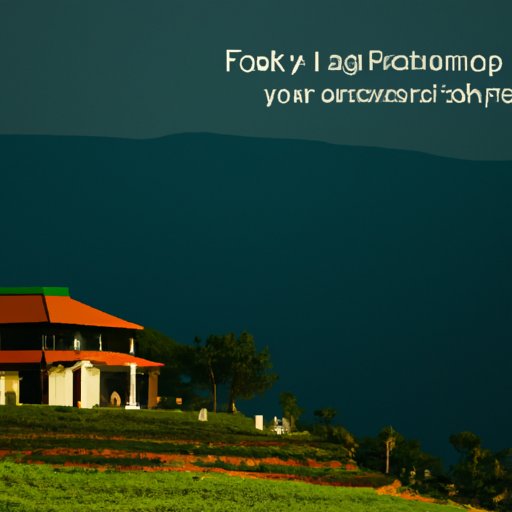Introduction
Landscape photography is a type of photography that captures the beauty of the natural world. It can be anything from a wide-angle shot of a mountain range to a close-up of a single flower. It is a form of art that allows photographers to capture the vivid colors, textures, and shapes of the environment around them.
The purpose of this article is to explore the basics of landscape photography, as well as some tips and tricks for capturing stunning images. We’ll also look at different types of landscape photography, how to compose a dramatic shot, essential gear for landscape photography, and the power of light in landscape photography. By the end of this article, you should have a better understanding of what landscape photography is, and how to capture beautiful images.
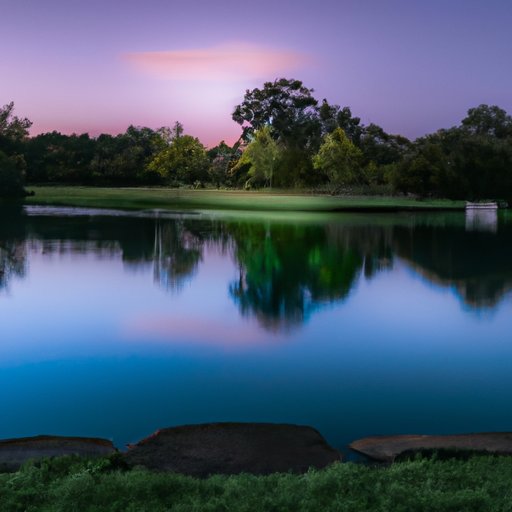
Exploring the Basics of Landscape Photography
When it comes to landscape photography, there are a few things to keep in mind. First, you want to find something interesting to photograph. This could be a mountain range, a lake, or a field of wildflowers. Look for something with strong lines, vibrant colors, and interesting shapes. Once you’ve found your subject, it’s time to set up your camera.
When setting up your camera, you’ll want to adjust the shutter speed, aperture, and ISO. The shutter speed determines how long the camera’s shutter stays open, which affects the amount of light that enters the camera. The aperture controls the depth of field, which is the amount of the image that is in focus. Lastly, the ISO determines the sensitivity of the camera’s sensor, which affects the quality of the image.
Once you’ve adjusted your camera settings, it’s time to take the shot. Here are a few tips for capturing great photos:
- Use a tripod to keep your camera steady.
- Have patience and wait for the perfect moment.
- Try different angles and perspectives.
- Be aware of the light and shadows.
- Take multiple shots to get the best one.
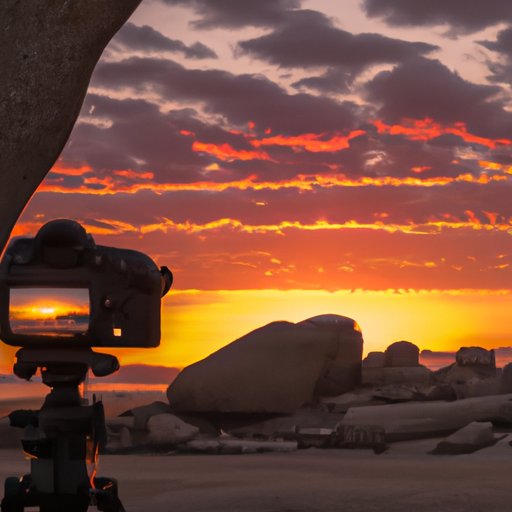
Tips and Tricks for Capturing Stunning Landscape Images
Now that you’ve explored the basics of landscape photography, let’s take a look at some tips and tricks for capturing stunning images.
Finding the Right Angle
When shooting landscapes, it’s important to find the right angle. Try taking shots from different vantage points, such as from the ground, from a higher point, or even from an aerial view.
Utilizing Foreground Interest
Foreground interest can add depth and dimension to your landscape photos. Look for something in the foreground that will draw the viewer’s eye into the scene, such as a tree, a rock formation, or a patch of flowers.
Knowing Your Equipment
It’s also important to know your equipment. Experiment with different lenses, filters, and other accessories to see what works best for the type of photos you want to capture.
How to Create a Dramatic Landscape Photo
Creating a dramatic landscape photo takes practice and patience. Here are some tips for creating a stunning shot:
Using the Rule of Thirds
The rule of thirds is a compositional technique that divides an image into three sections. When using this technique, place the main subject of the photo along one of the gridlines, or at the intersection of two lines. This will create balance and interest in the photo.
Adding Motion
Motion can add drama to a landscape photo. To create a sense of motion, use a slow shutter speed and pan the camera while taking the shot. This will blur the background and make the subject stand out.
Capturing Reflections
Reflections can also add drama to a landscape photo. Look for reflective surfaces like lakes and rivers, and try taking shots at different times of day to see how the light reflects off the surface.
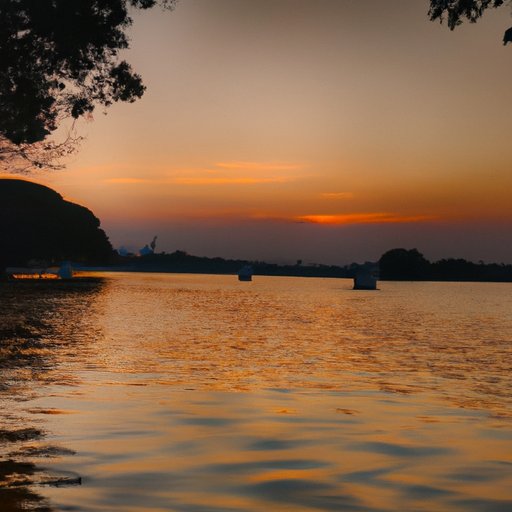
Different Types of Landscape Photography
Landscape photography encompasses many different types of photography. Here are some of the most popular types of landscape photography:
Cityscapes
Cityscapes involve photographing the skyline of a city. This type of photography often involves capturing the lights of the city at night.
Seascapes
Seascapes involve photographing the ocean. This type of photography often involves capturing the movement of the waves, the reflections of the sun on the water, and the beauty of the coastline.
Nature Photography
Nature photography involves photographing plants, animals, and other elements of the natural world. This type of photography often involves capturing the beauty of the wilderness.
Night Photography
Night photography involves capturing the stars and other elements of the night sky. This type of photography requires a lot of planning and preparation, as you need to know the best time and location to shoot.
The Art of Composition in Landscape Photography
Composition is one of the most important aspects of landscape photography. Here are some tips for creating a well-composed photo:
Framing the Scene
Framing the scene can help draw the viewer’s eye into the photo. Look for elements like trees, rocks, or buildings that can frame the scene and add interest to the photo.
Understanding Depth of Field
Depth of field is the area of the image that is in focus. Use a wide aperture to create a shallow depth of field, which will make the main subject stand out.
Choosing the Right Focal Length
The focal length of the lens you use will determine the perspective of the photo. Wide-angle lenses will allow you to capture more of the scene, while telephoto lenses will compress the scene and make the subject appear closer.
Essential Gear for Landscape Photography
In addition to your camera and lenses, there are a few pieces of gear that are essential for landscape photography. Here are some of the most important pieces of equipment:
Tripod
A tripod is essential for keeping your camera steady when shooting landscapes. It will also allow you to take long exposures without having to worry about camera shake.
Telephoto Lens
A telephoto lens is great for capturing distant subjects or compressing the scene. It is also useful for wildlife photography.
Filters
Filters are essential for controlling the light and color in your photos. Look for neutral density filters, polarizing filters, and graduated neutral density filters.
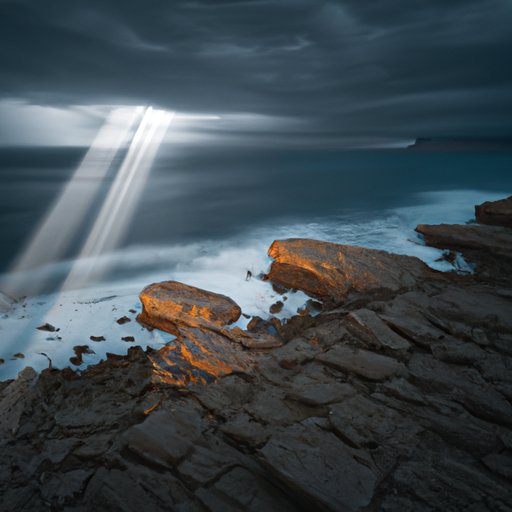
The Power of Light in Landscape Photography
Light plays an important role in landscape photography. Here are some tips for working with light:
Working with Natural Light
Natural light is the most important element in landscape photography. Look for interesting light sources, like the sun or moon, and use them to create interesting shadows and highlights.
Using Artificial Light
Artificial light, such as flash or studio lighting, can also be used to enhance your landscape photos. Experiment with different types of lighting to create interesting effects.
Understanding Color Temperature
Understanding color temperature is key to capturing beautiful landscape photos. Different types of light have different color temperatures, which can affect the overall look of the photo.
Conclusion
Landscape photography is a beautiful form of art that allows photographers to capture the beauty of the natural world. In this article, we explored the basics of landscape photography, as well as some tips and tricks for capturing stunning images. We looked at different types of landscape photography, how to compose a dramatic shot, essential gear for landscape photography, and the power of light in landscape photography. Now that you have a better understanding of what landscape photography is, and how to capture beautiful images, you’re ready to start capturing stunning shots.
(Note: Is this article not meeting your expectations? Do you have knowledge or insights to share? Unlock new opportunities and expand your reach by joining our authors team. Click Registration to join us and share your expertise with our readers.)
